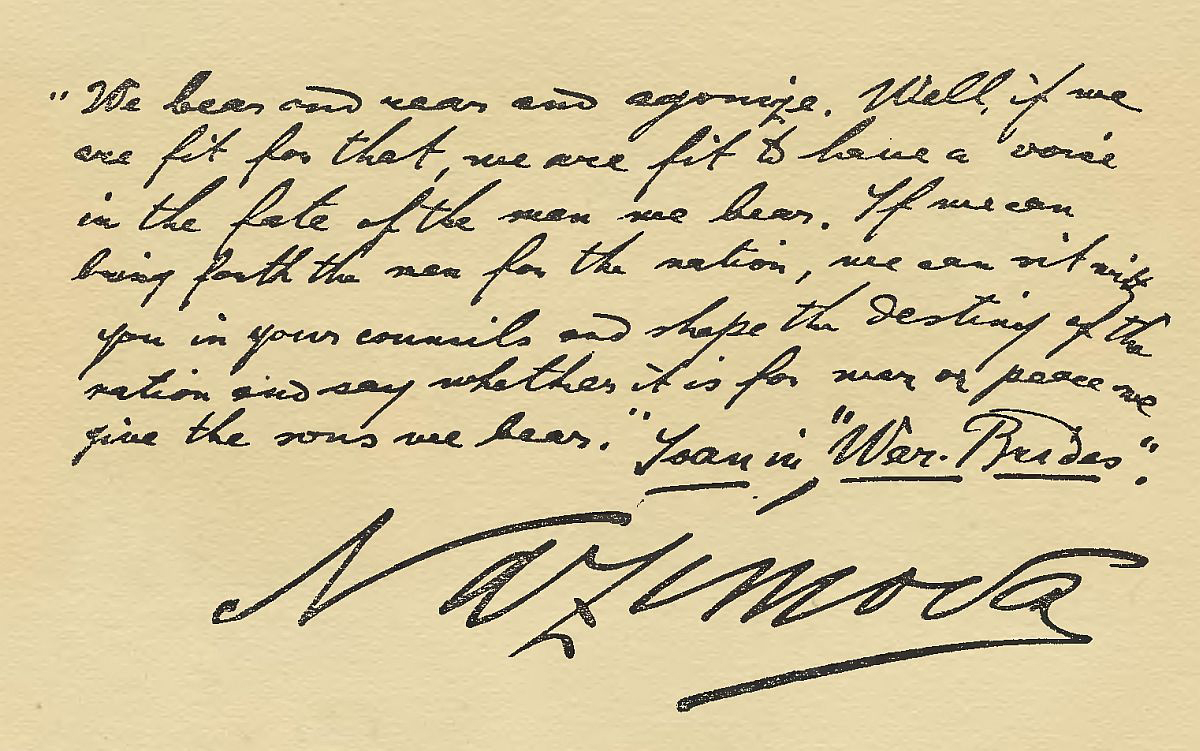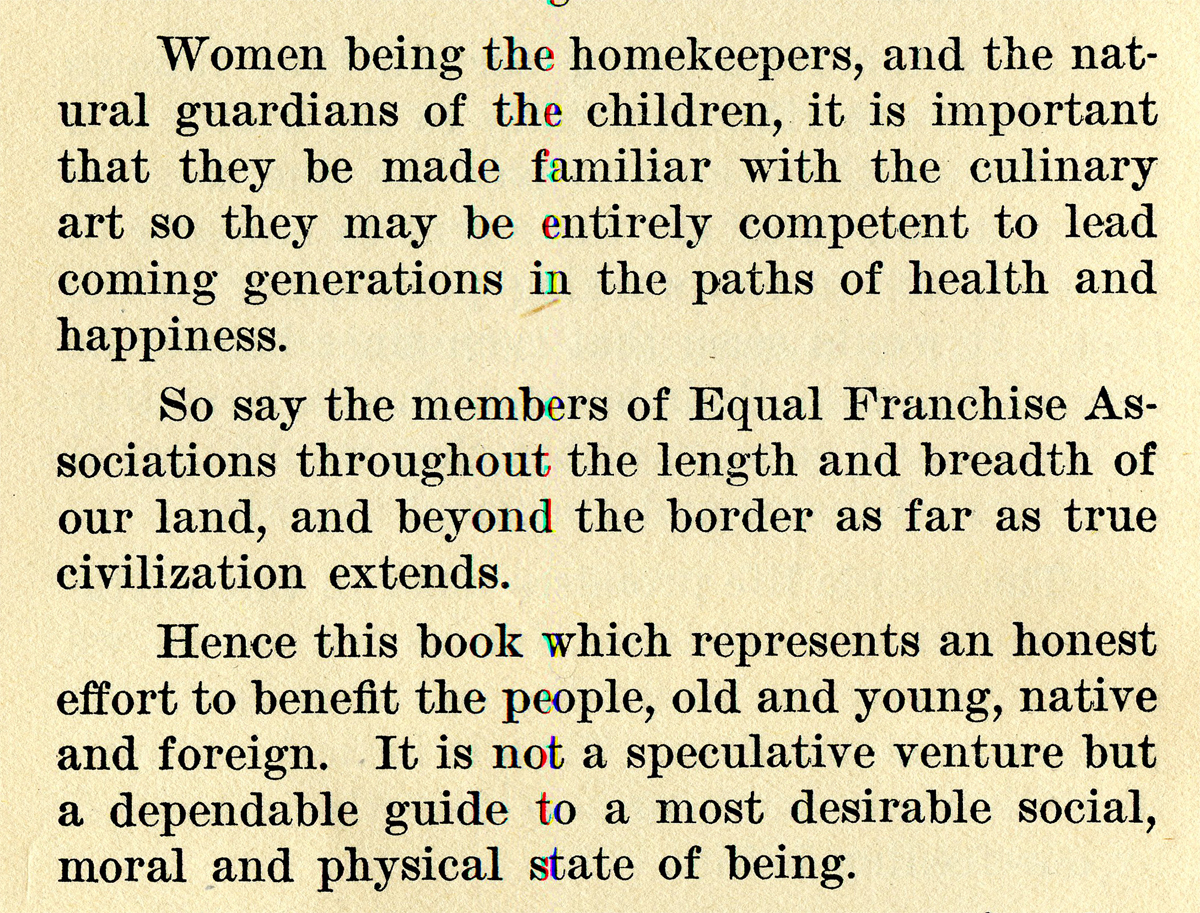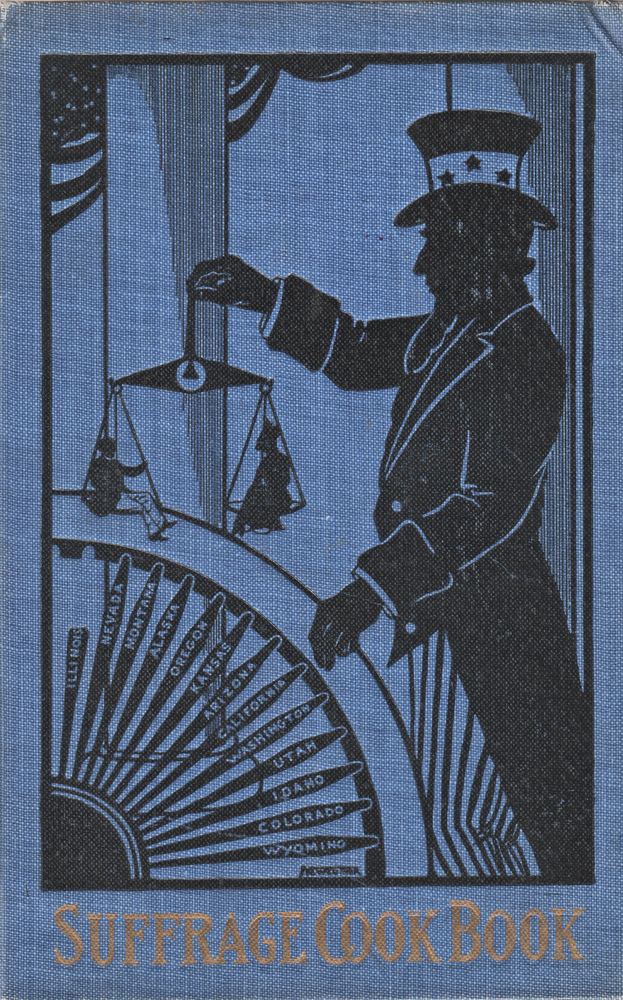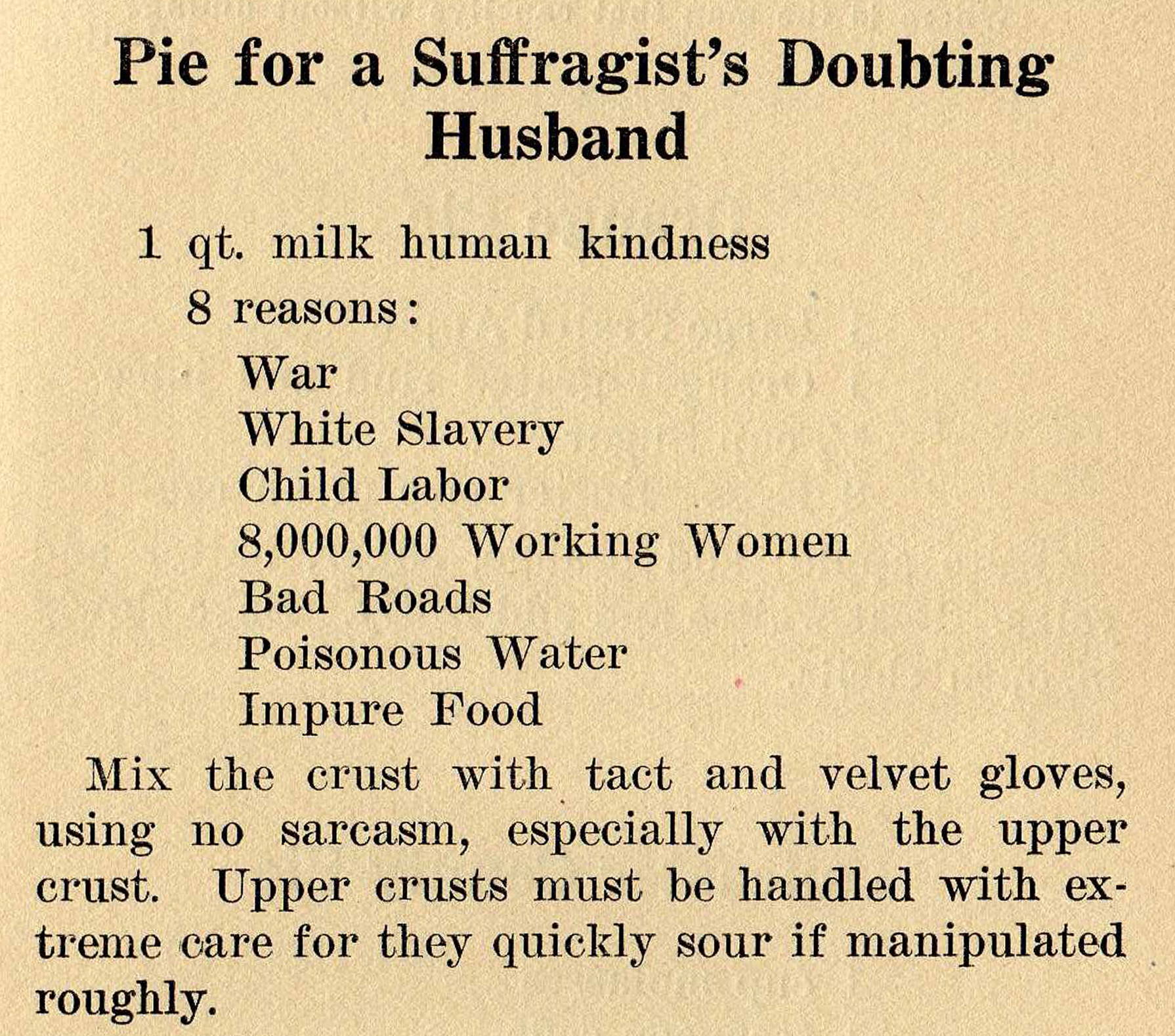Every year, March the 14th, 3/14 or 3.14, is celebrated as Pi Day. Once a century, however, the date is 3/14/15, making it an extra special Pi Day. Tomorrow is such a day.
There’s scarcely a holiday celebration without its associated commestibles: Thanksgiving has its turkey, Hanukah its latkes, Ramadan its qaṭāyif, Oshogatsu (the Japanese New Years festival) its osechi ryori, and the 4th of July its picnic fare. For Pi Day, it’s….well, pie. Preferably a pie with a circumference approximately 3.14159265358979323846264338327950288419716939937 50158209749445923078164062862089986280348253421170679 times its radius.
Fortunately, this is true of many pies.
To help you celebrate, here’s collection of pie recipes from 1915 cookbooks, the *last* time the date could have been expressed as 3/14/15
And, this being women's history month, what could be better than a suffragist pie?
The JBLCA has a number of suffrage related cookbooks. each with its own involvment in and presentation of the issue. In keeping with our theme of years that end with the number 15, today I’d like to introduce you to The Suffrage Cookbook, compiled by Mrs. L. O. Kleber, which was published in Pttsburgh in 1915 to raise money for the work of the Equal Franchise Federation of Western Pennsylvania.

Detail from the cover of The Suffrage Cook Book, 1915
1915 was quite a publicity year for the suffrage movement in the US. Sara Bard Field made a transcontinental trip to deliver a suffrage petition to President Woodrow Wilson, and her tour gathered more than half a million signatures. In October New York suffragists organized a parade to advocate for the vote: on the 23rd more than 25,000 women marched up Fifth Avenue.
Charity cookbooks in the 19th and early 20th century embraced many causes, everything from support for the local church building fund to national scale movements such as temperance. While many of our 1700 Charity Cookbooks have either a political motive, or political content, few are quite so explicitly political as this one.
Suffrage is a strikingly apt cause for a charity cookbook, considered as a move by women to act in the public sphere. I call it apt because the act of creating a cookbook was a crossover activity – women who created these books were, on the one hand, staying within women’s sanctioned sphere, concerning themselves with cookery, which was securely within women’s domestic concerns. On the other hand, by publishing a book, and fundraising for a cause, thereby influencing a national debate, they were taking action on the national stage.
The book is a an interesting mix. There are of course recipes, some from contributors chosen for their prominence as public figures as well as their support for Suffrage. Jane Addams, founder of Hull House , is present, as is Suffrage leader Carrie Chapman Catt, and author Charlotte Perkins Gilman. But we also find Jack London, and the actress Madame Nazimova, who was just beginning her movie career in 1915. She provides, not a recipe, but a quote from her first movie, War Brides.

The Suffrage Cook Book, 1915, p. 132
There are statements of various kinds, connecting Women’s rights and their culinary responsibilities, such as this tribute, from the introduction written by columnist Erasmus Wilson:
Women being the homekeepers, and the natural guardians of the children, it is important that they be made familiar with the culinary art so they may be entirely competent to lead coming generations in the paths of health and happiness.
So say the members of Equal Franchise Associations throughout the length and breadth of our land, and beyond the border as far as true civilization extends.
Hence this book which represents an honest effort to benefit the people, old and young, native and foreign. It is not a speculative venture but a dependable guide to a most desirable social, moral and physical state of being.

The Suffrage Cook Book, 1915, p. 8
The book also has letters in support of suffrage from the governors of states that already had it – Arizona, California, Wyoming, Idaho, Illinois, Kansas, Washington, and Oregon – all to the effect that women are thoughtful, responsible voters and support good government, and their voting is therefore beneficial to the state.
Suffrage states are also represented on the cover - each state in which women could vote is represented as a spoke on a wheel being handled by Uncle Sam. (Perhaps it is the wheel which steers the Great Steamboat of State.) Illinois has only half a spoke, because women could vote only in schoolboard elections.

The Suffrage Cook Book, 1915, cover
And it’s well-larded with humor, especially satire. There are a few satiric recipes scattered through the book, including Anti’s Favorite Hash, and this pie recipe.
Pie for a Suffragist's Doubting Husband
1 qt. milk human kindness
8 reasons:
War
White Slavery
Child Labor
8,000,000 Working Women
Bad Roads
Poisonous Water
Impure Food
Mix the crust with tact and velvet gloves, using no sarcasm, especially with the upper crust. Upper crusts must be handled with extreme care for they quickly sour if manipulated roughly.

The Suffrage Cook Book, 1915, p. 147
So we can see that valuable political lessons were being learned by women as they mediated between private and public spheres of life in early 20th century America.
Whether you want to celebrate women's suffrage, mathematical ratios, or pie, raise a glass (or a fork) tomorrow at 9:26, and a happy Pi Day to you.
Further reading:
The Old Girl Network, an exhibit on women’s charity publishing and political work in the 19th and early 20th centuries